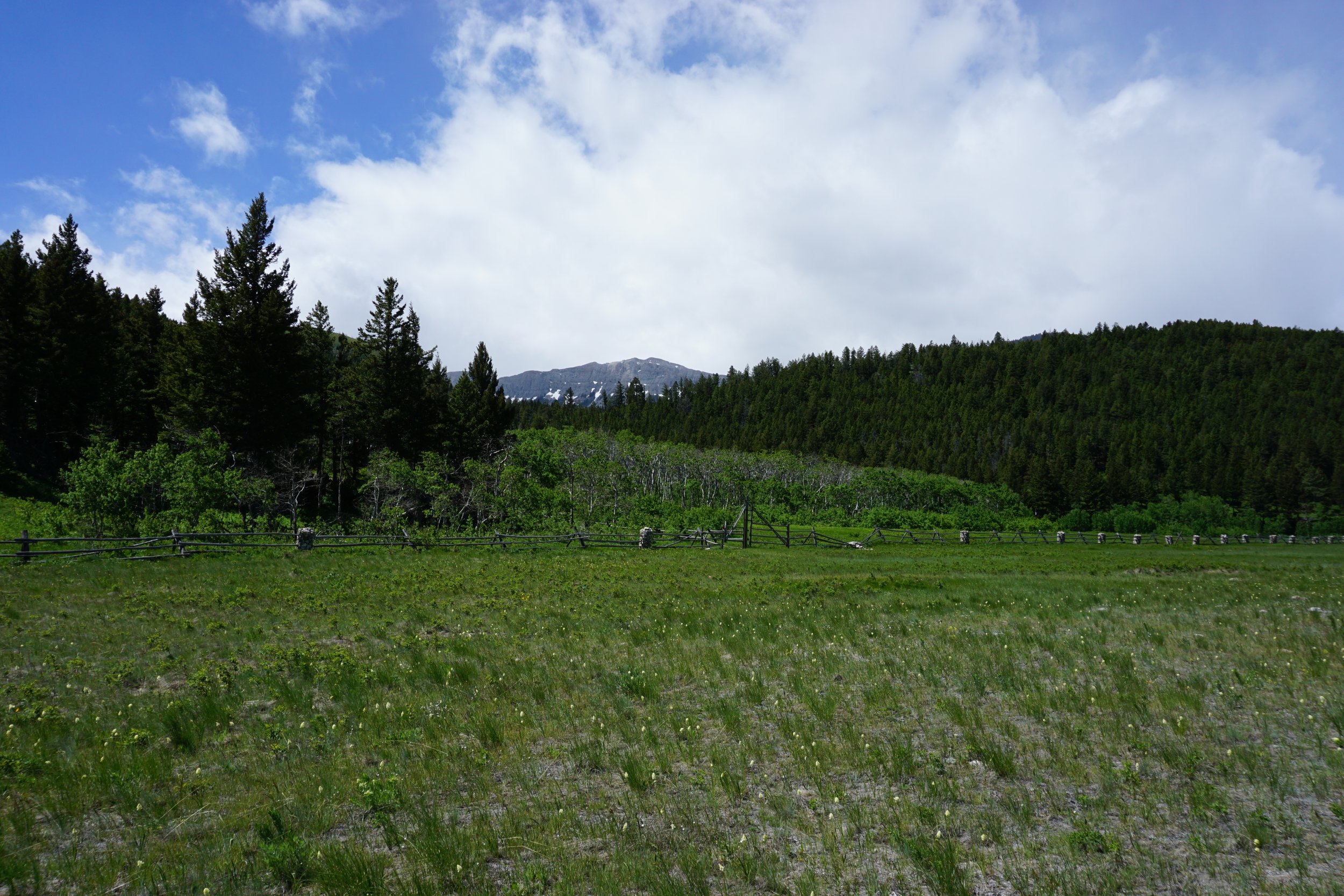Spring Creek, just outside the Choteau Pavilion, where the Métis Music and Art Festival takes place every year.
Recently, I’ve been thinking about home—not as a place but as a feeling. What makes a place, or a person, or an event, or even a song or tune feel like home?
This year was the fourth time that I’ve travelled to Choteau, Montana, for the Métis Music and Art Festival, having attended in 2018, 2019, and 2022. (The event was cancelled in 2020 due to COVID-19, and ongoing border restrictions kept me from attending in 2021.) It was only my fourth time in Choteau (you can read about my previous trips below), yet something about the place and the event felt like home.
Choteau is located at the western edge of the Great Plains/Canadian Prairies, at the base of the Rocky Mountains. To get there from Lethbridge, I drive through the wide-open prairie—framed on a clear day by the intense blue of the expansive sky—through valleys and hills, and across the Marias River, a tributary of the Missouri River. (I also drive across a colonial border that divides the Métis people and that makes Choteau seem more distant than just 250 kilometres.) Some people call the Canadian Prairies/Great Plains dull, stretching on for what seems like forever in every direction—the landscape fodder for jokes about watching your dog run away for days. But to me the sky is like the ocean, impressive, awe-some, humbling. I feel no larger, and no more important, than the rabbit the runs through the fields when I’m under that great sky.
The prairie feels like home.
Where the prairie meets the mountains, northwest of Choteau.
I wonder how much of that feeling of prairie-as-home is passed on in the blood, a genetic memory of place; and how many generations it takes for a place to feel like home. Maybe some day I can trace the pathways of my ancestors, and find that feeling of home in other places. But for now, as a third-generation immigrant to the Canadian prairies who feels the choking sensation of claustrophobia in the mountains, the grassy expanses and huge skies of the prairie make me feel a little bit of home.
But it takes more than earth and sky to make home.
Nicholas Vrooman leads a group of young, Montana musicians at the Métis Music and Art Festival in 2018.
This year, the Métis Music and Art Festival included what I believe was its first fiddling competition.
There aren’t too many fiddlers in the area anymore, though people remember relatives who played—an uncle, a grandfather. And as lifelong Choteau resident and respected Elder Al Wiseman shared during an Elders’ panel at this year’s Métis Music and Art Festival, the Métis survived tough times through their faith in God and through the fiddle. The fiddle was the “glue” (this was Wiseman’s word) that kept them together.
Al Wiseman, in cowboy hat, after competing in a jigging competition at the 2019 Métis Music and Art festival. Organizers Julie and Kathy Moran in the background, and Wiseman’s wife, Elaine Wiseman, to the far right.
I grew up with the fiddle, playing at old-time fiddling contests and listening to (and even playing with) some of the greatest fiddlers in Canada.
And, I’ll admit it. I sometimes get tired of it. (Perhaps as we sometimes need space from family.) After listening to fiddling from morning to night at a festival or camp, and after hearing ten or more versions of “Faded Love” (a tune that was very popular at Métis gatherings when I was doing my PhD research from 2009 - 2013), for a moment I think that I’ve had enough. But when it’s gone, something doesn’t feel right.
I spent the first five years in Lethbridge without the fiddle. It’s the first prairie town that I’ve lived in that doesn’t have a fiddle culture. Then, last fall, I started a jam session, a small, tentative step towards building a fiddle culture here. It’s not much yet—there’s no sense of fiddling as a culture and way of being rather than a set of tunes—but it’s something. It’s a start towards making this place feel, and sound, a bit more like home.
Because there are no longer many fiddlers in Choteau or the surrounding area, the fiddling contest at this year’s Métis Music and Art Festival was small, with just three contestants. All were from outside of Montana (though connected to Métis in Montana as kin), all were nudged strongly into competing—enticed with a nice prize and perhaps a sense of duty—and all were using my fiddle because they hadn’t brought their own. (A fiddle, I might add, that was made in the prairies.) To say that the competition didn’t have the polish of the contests I grew up with in Manitoba would be an understatement.
But by the end of the very short competition—a competition that included laughter, gentle and good-natured ‘ribbing’ alongside encouragement from the audience, and sincere respect for the contestants who got up to play—I got that home feeling.
Prairie. Sky. Fiddle. Laughter. Home.






























